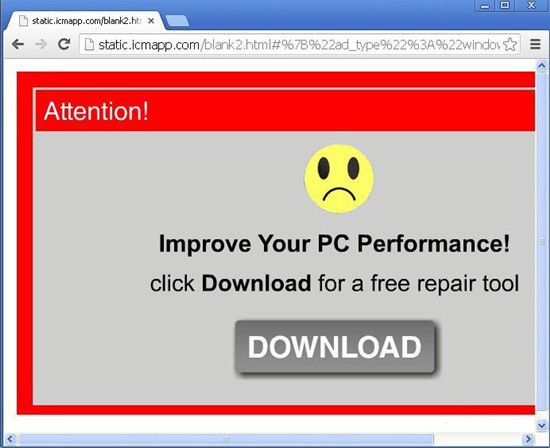4 Ways to Protect yourself from Ransomware
We know how much of a hassle it is to lose your files so here's a quick guide on how to protect yourself from Ransomware attacks.

The Ransomware threat has been going around lately and it’s definitely no joke. Not only is it evolving but it seems that noone is safe. We know how much of a hassle it is to lose your files so here’s a quick guide on how to protect yourself from Ransomware attacks.

First of all, WHAT IS RANSOMWARE? In case you haven’t really bothered to know what it is, Ransomware is a type of software that either threatens to publish an infected system’s data or blocks access to the infected system’s files unless a ransom is paid. The ransom costs are pretty high (around 300 USD but it varies per instance) and it’s pretty damn scary when it happens to you. Various companies and individuals have been hit with this sort of software. Certain types even infect systems that are part of the same network of the initially infected system. It’s a huge hassle especially if you have some vital / highly personal files that you don’t want to lose. It’s really best if you take precautionary measures to prevent yourself from becoming a victim. Here’s what you can do.
1. Back-Up your Files
You can’t lose your files if you have them properly backed-up. Make it a habit to regularly back-up your files ESPECIALLY the important ones (i.e. Business / Financial files, Personal / Confidential files). It may be a hassle but having this sort of safety net is something you’ll appreciate if you get infected or if your hardware ever fails on you. It’s an extra step to take but definitely well worth it.
What’s the best way to go about backing up your files? The most important part is to FIND A RELIABLE HARD DRIVE for the the job. You’ll need one that’s of high quality and will not break down easily. Ungeek recommends SEAGATE brand Hard Drives. These babies are tried and true and will be a great fit for your back-up.

Find an external drive that fits your needs HERE. Once you have the external HD that you want, just copy your vital files onto it, unplug it, and store it somewhere safe (someplace that’s not exposed to heat, moisture, etc.) Then update the contents of your back-up as needed (when you come across important files) and regularly (every month / every 2 months depending on the schedule you set for yourself). Having this definitely frees you of the fear of being victimized because you at least know that, if ever your system gets compromised, you have a back-up ready and available.
2. Update your System Software Regularly
Companies like Microsoft and Apple are definitely taking the threat seriously. As such, they have released various updates to try and protect users against the Ransomware threat. You know those notifications you get from your computer about system updates? DON’T IGNORE THEM. Take the time to download and install them on your computer. I know that some of us think that these extra downloads are just a hassle but, believe me, a few minutes of hassle is tons better than subjecting yourself to all the regret you’ll feel if you do get infected.

3. Install and Update your Anti-Virus
You know who else has been making strides to combat the Ransomware threat? Anti-Virus companies, that’s who! Various Anti-virus companies have been releasing updates in an effort to detect and eliminate Ransomware. Select an anti-virus that you prefer, install it, and make sure you regularly update it. Not sure what anti-virus to get? You can check out https://www.av-test.org/en/ where various anti-viruses are compared and rated.

Sample screen from av-test.org
4. Be Vigilant
A friend once told me that one of the best methods of prevention is proper vigilance. ALWAYS BE WARY OF THE THINGS YOU CLICK. Here’s a quick run-down of what we mean:
- Emails – Does the subject look fishy? Did you get an email from someone or some site that you don’t remember ever interacting with? Is it an email about some Nigerian Prince asking you for help and will pay you huge sums of money in exchange for your assistance? (Seriously, this was legit a scam that went around) IGNORE THOSE. Open emails from people you trust. Be wary of emails that have weird files attached to them as well as those that ask you to click on some dubious link. Web emails like Gmail and Yahoo do a pretty good job in filtering spam but if you happen to get one in your Inbox, practice proper vigilance and think twice before clicking on stuff.
- Pop-ups – Aside from being annoying, you should always be careful in clicking pop-ups. These usually appear in dubious sites (i.e. Filesharing / Torrent sites, Porn, etc) and usually try to trick you into clicking them. Sometimes, they even play on your fears by saying “YOU HAVE BEEN INFECTED! CLICK HERE TO…”. Once again, just DON’T. No, those “Hot Singles in your Area Interested in You” are usually lies as well (LOL). Be smart and try to close pop-ups immediately. Be wary on what you click and be selective in the sites you visit / interact with. The Internet is an awesome place but it can also be hella dangerous if you’re not careful

Don’t. Just Don’t.
The Ransomware threat is NO JOKE. It’s an invasion of your privacy, a huge hassle, and can be a cause of great distress. Be sure to take the necessary steps to protect yourself. If you ever find yourself being infected, REMEMBER TO DO THE FOLLOWING:
- Disconnect it from the net so as not to infect other systems in your network
- Take it to an expert to see if there’s any other way to save your files
- Report it to Microsoft / Apple via email to see if they can help you
If you have properly backed-up your files, you can also just ask help from an expert to flush out your computer and just get your files from your back-up.
Stay safe, everyone!

